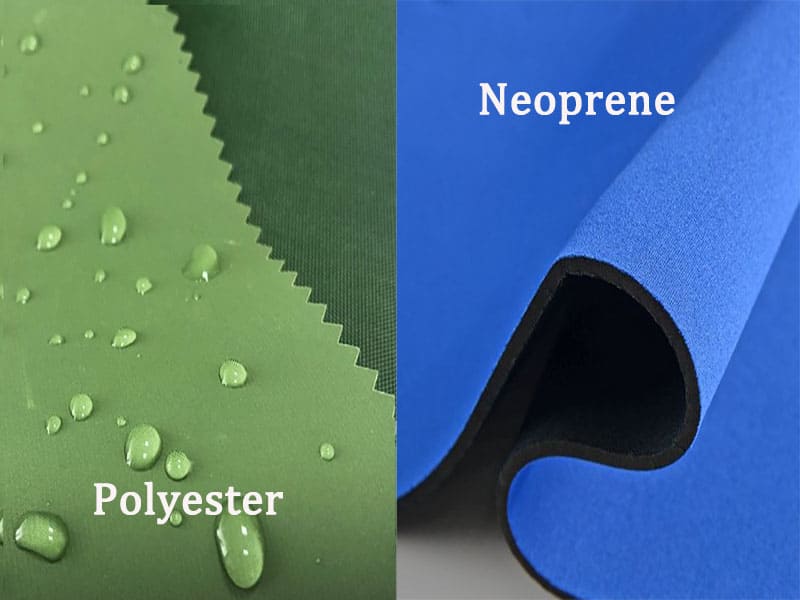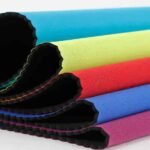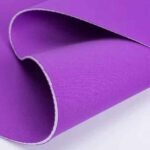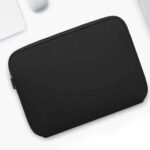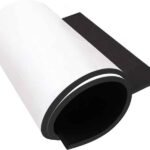When it comes to choosing the right material for your bags, the options can seem overwhelming. Neoprene and polyester are two popular materials known for their versatility, durability, and unique properties. However, each material serves different purposes, making it essential to understand their key differences before making a choice.
Neoprene is renowned for its flexibility, water resistance, and cushioning properties, while polyester stands out for its affordability, lightweight nature, and wide availability. Let’s compare these two materials and explore their uses in bag manufacturing.
What Are Neoprene and Polyester?
Neoprene and polyester are synthetic materials with distinct characteristics and applications.
Neoprene is a synthetic rubber material known for its elasticity, insulation, and water resistance, making it ideal for items exposed to moisture or requiring durability. Polyester, on the other hand, is a synthetic fiber derived from petroleum, prized for its lightweight, strong, and wrinkle-resistant properties.
Key Characteristics of Neoprene and Polyester
| Property | Neoprene | Polyester |
|---|---|---|
| Water Resistance | Excellent | Moderate |
| Elasticity | High | Low |
| Durability | High | Moderate |
| Lightweight | Moderate | High |
| Cost | Higher | Lower |
What Is the Difference Between Neoprene and Polyester?
The primary difference lies in their structure and performance.
Neoprene is thicker, more elastic, and water-resistant, while polyester is thinner, lightweight, and less resistant to water. These distinctions make neoprene suitable for specialized applications like protective gear and waterproof bags, whereas polyester is better suited for everyday items like lightweight totes or apparel.
Comparing Performance in Bags
| Feature | Neoprene | Polyester |
|---|---|---|
| Shock Absorption | Excellent | Low |
| Temperature Insulation | High | Moderate |
| Maintenance | Easy to clean, quick-drying | Easy to clean, dries quickly |
| Customization Options | Limited in textures | Wide variety of patterns |
What Are Neoprene Bags Good For?
Neoprene bags are ideal for situations that require durability, protection, and water resistance.
They excel in protecting electronic devices, carrying gym or sports gear, and serving as reliable travel companions for outdoor activities. The material’s cushioning properties also make it perfect for delicate items, providing extra security.
Popular Uses of Neoprene Bags
- Gym Bags: Protecting sweaty clothes and wet towels.
- Laptop Sleeves: Offering shock absorption and water resistance.
- Beach Bags: Resisting water and sand exposure.
- Cooler Bags: Maintaining the temperature of food and drinks.
What Is the Most Durable Material for Bags?
Durability is a critical factor in bag selection, and both neoprene and polyester have strengths.
Neoprene is considered more durable due to its thicker structure, resistance to wear and tear, and excellent shock absorption properties. Polyester, while durable, is more susceptible to abrasion and may not hold up as well in extreme conditions.
Durability Comparison Chart
| Feature | Neoprene | Polyester |
|---|---|---|
| Resistance to Abrasion | High | Moderate |
| Longevity in Use | Long-lasting | Moderate |
| Water Resistance | Excellent | Moderate |
Which Is Better, Neoprene Bags or Polyester Bags?
Choosing between neoprene and polyester bags depends on your specific needs and usage scenarios.
Neoprene bags are better for water resistance, durability, and shock absorption, making them ideal for outdoor activities or protecting valuable items. Polyester bags, however, are lightweight, cost-effective, and suitable for everyday use.
Pros and Cons of Each Material
| Material | Pros | Cons |
|---|---|---|
| Neoprene | Durable, water-resistant, protective | Heavier, higher cost |
| Polyester | Lightweight, affordable, versatile | Less durable, lower water resistance |
Conclusion
Neoprene and polyester each bring unique strengths to the table. Neoprene offers durability, water resistance, and shock absorption, making it ideal for demanding situations. Polyester, on the other hand, provides a lightweight, affordable option for everyday use. The best choice ultimately depends on your specific needs and preferences.
At Szoneier, we specialize in both neoprene and polyester bags, offering customizable options to meet your requirements. Whether you’re looking for durable neoprene bags or lightweight polyester totes, we’re here to help. Contact us today to learn more about our products and customization services.

